The National Textiles Museum is on a mission to breathe new life into a nearly forgotten art form with its latest exhibition, "Pesona Telepuk: The Art of Gold Leaf."
This special showcase highlights the intricate and mesmerising craft of telepuk, a traditional local technique of applying gold leaf to fabric that once adorned the garments of royalty and nobility.
The exhibition, which is being held at the Galeri Saindera, Muzium Tekstil Negara from 28 October to 31 December 2024, aims to preserve this precious heritage and inspire a new generation of artisans to carry forward the legacy of telepuk by showcasing the techniques used to craft fabric with telepuk and displaying various telepuk articles of clothing with some dating back to the early 1900s.
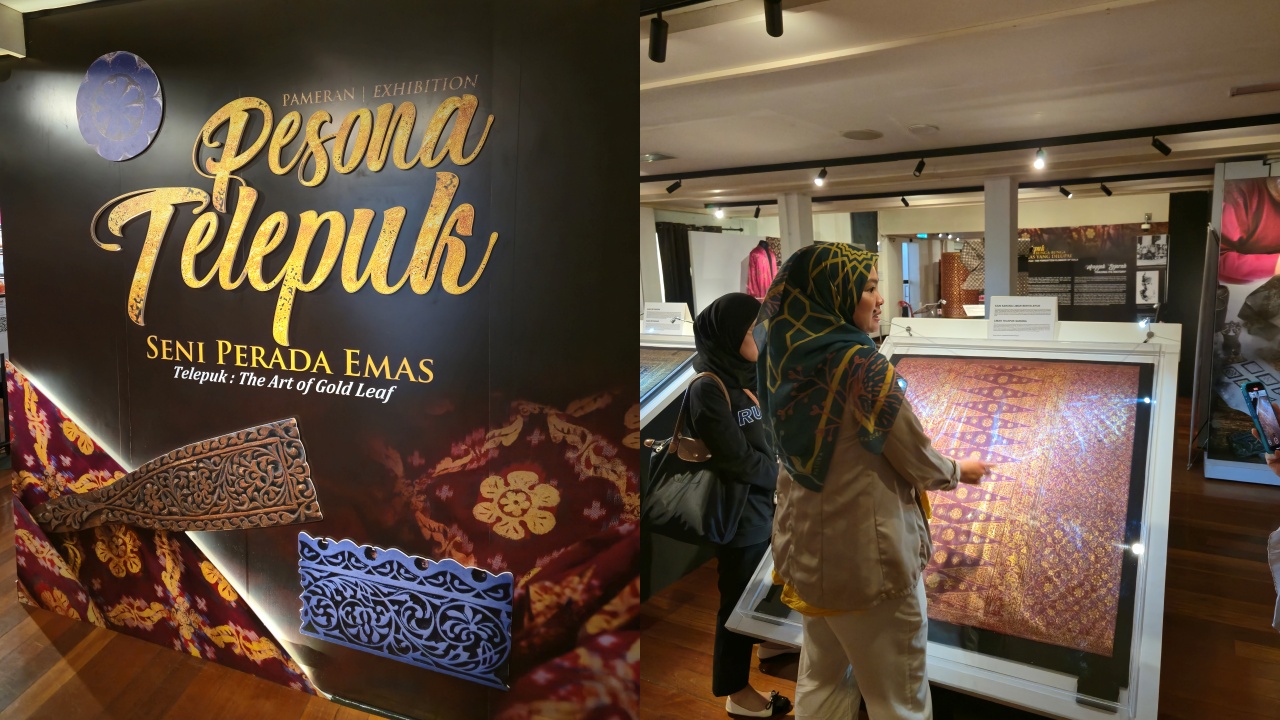
What is telepuk?
Telepuk, or the art of textile gilding, is a dying traditional Malay textile decorating technique that was supposed to have begun in the 17th or 18th centuries.
Gilding is the unique art of decorating fabric with a thin coating of gold, either in leaf or powder form.

Such textiles were considered the 'property of the palace' in the past due to their decoration with real gold leaves and their use by royalty or nobility and were once worn by the sultans of Johor, Selangor, Pahang, and Terengganu.
What is the process like?
The art involves the process of stamping a motif using a wooden block with a sticky paste onto the fabric before the shimmering gold leaf or dust is laid onto the sticky cotton or silk fabric to create a cloth adorned with gold leaf or tinsel.
The pattern is usually designed for a sarong, which is worn as an outer garment for women or as a samping for men and can also be used as a headdress.
The process of textile gilding was unique, as it required the artisan to master several skills and was tedious. Telepuk uses base cloth that is heavily starched. After removing the excess starch, the cloth is dried and covered with beeswax. Then, with the back of a Cowrie shell, it is rubbed until it shines using a technique known as 'menggerus kain.’
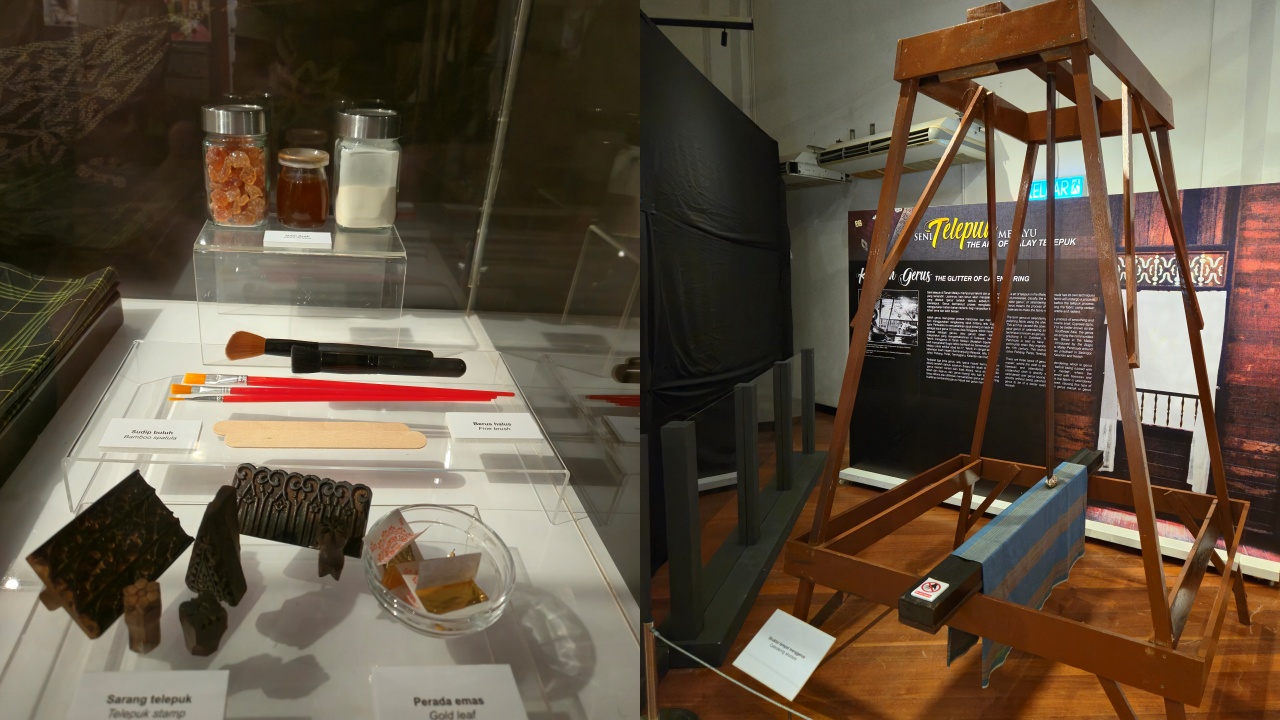
Once the surface was smooth and shiny, small wooden blocks with carved patterns were coated with gum Arabic. The blocks were then stamped gently onto the cloth. Before the glue dries, a gold leaf is pressed on top of the patterns.
Pesona Telepuk Exhibition
During our visit to the Pesona Telepuk Exhibition, museum curator Salmiahwati Djafar guided us and kindly explained what makes telepuk so unique.
Among the displays was Sultan Abdul Hamid’s baju sikap, an outer garment worn over baju Melayu, adorned with telepuk and featuring five gold buttons. This piece was worn during King George V’s installation ceremony in 1911.
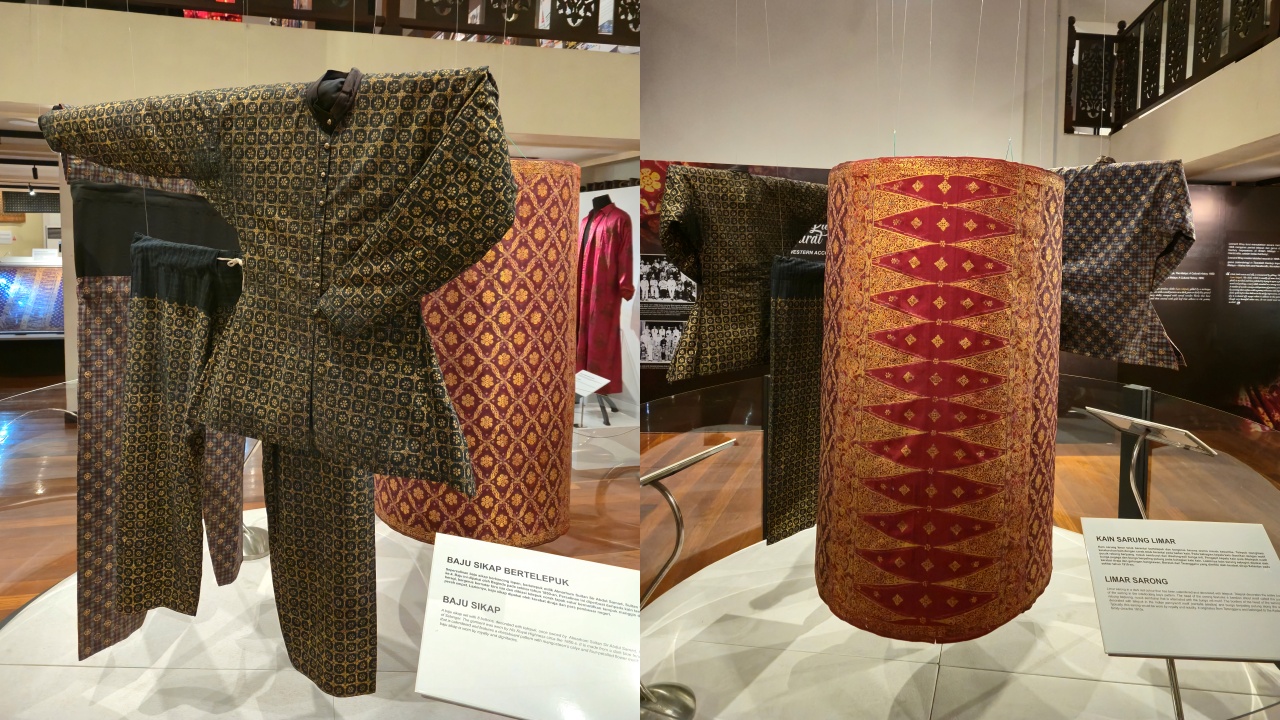
Another unique display item was a baju sikap decorated with telepuk belonging to Sultan Abdul Samad, the fourth Sultan of Selangor, which is estimated to be 170 years old. Meanwhile, Sultan Iskandar of Perak was also known to wear a headdress made of telepuk, while the late Sultan Hishamuddin of Selangor donned a baju laying, a cape-like garment that forms part of Selangor’s royal dress code.
The exhibits also included fascinating displays of various ancient texts that documented telepuk production and its prominence during that time.
We were also shown the tools of the trade, such as a sample of the wood block used to carve telepuk stamps, made from cengal or jelutong wood, a carving knife, and the materials used to produce telepuk, such as gold paper and Arabic gum.
The final part of the exhibition featured more modern iterations of telepuk, with creations by artisans on more modern accessories such as handbags.
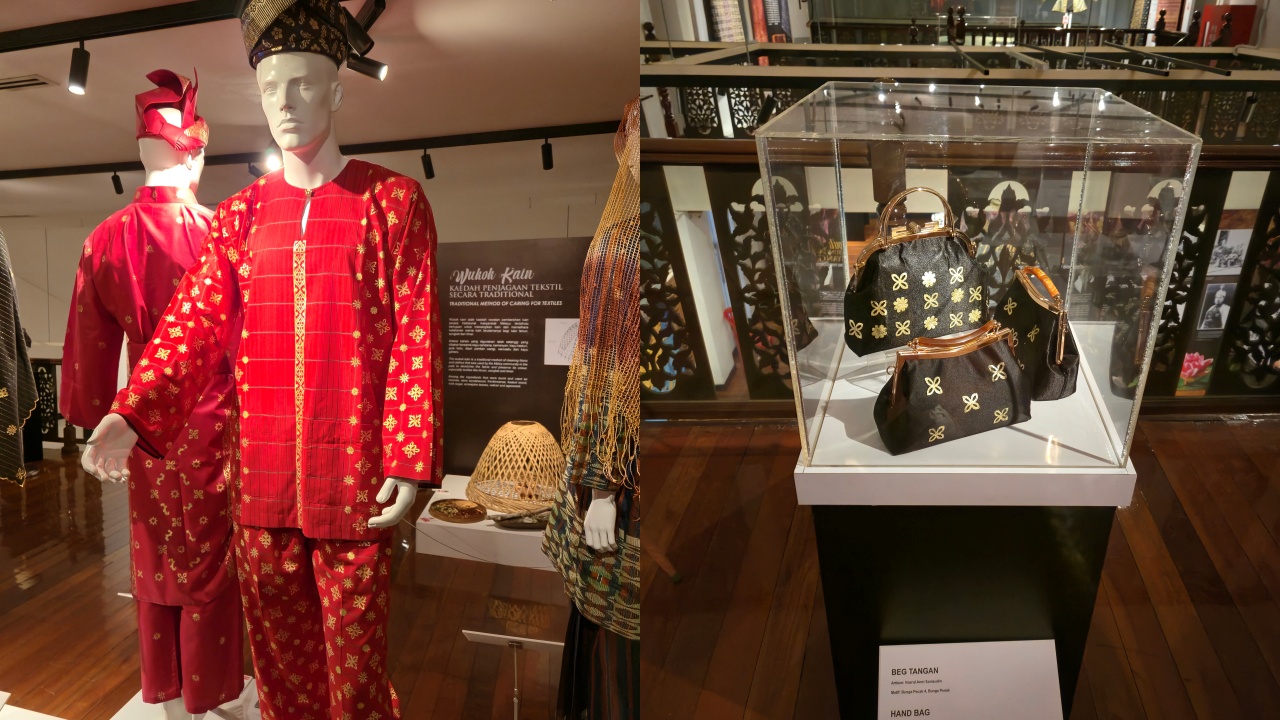
Most of the collection is over 100 years old, as telepuk production stopped after WWII, making this craft a dying art. However, with efforts from the Gerakan Langkasuka, Yayasan Hasanah, and collaborations with the National Textile Museum, workshops and knowledge-sharing sessions are being held to revive it.
Overall, the "Pesona Telepuk: The Art of Gold Leaf" exhibition at the National Textiles Museum is more than just a display of beautiful artifacts; it is a celebration of Malaysia's rich cultural heritage and a call to preserve a dying art form.
By showcasing the intricate craftsmanship and historical significance of telepuk, the museum hopes to inspire a renewed appreciation and interest in this traditional technique. We left the museum with a much deeper understanding of the importance of preserving and revitalising cultural traditions for future generations.
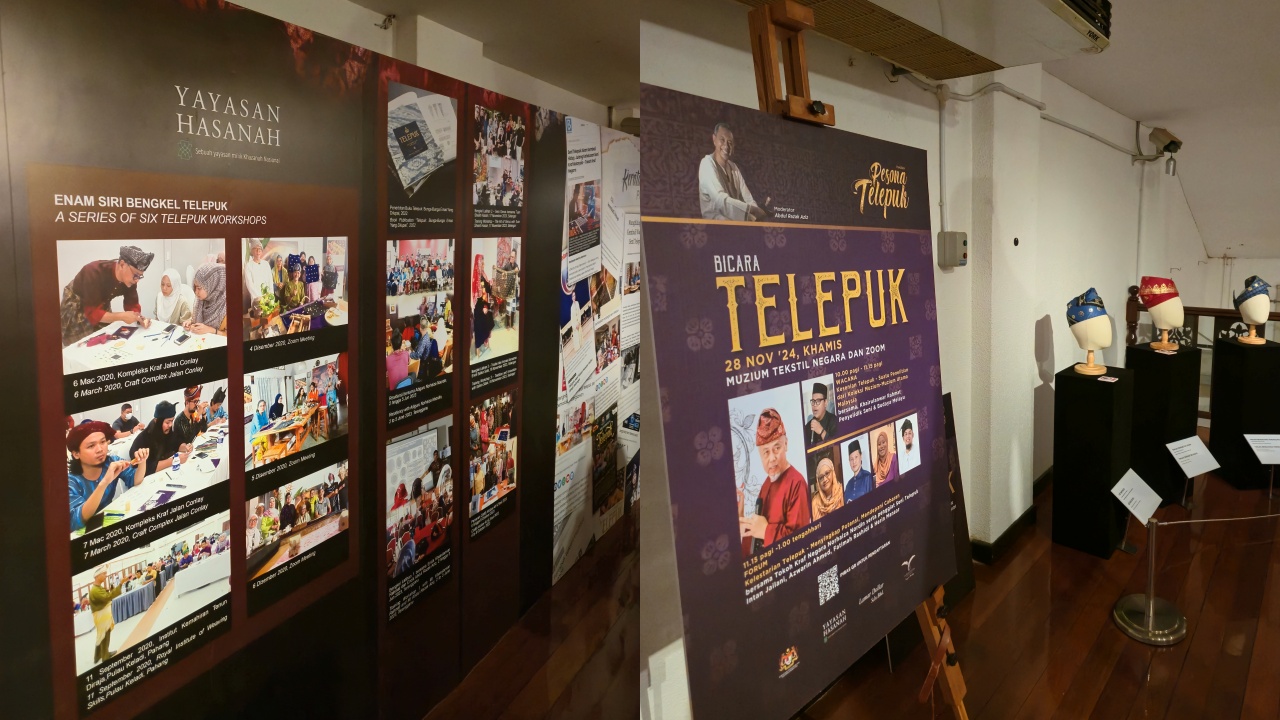
For more information, check out Muzium Tekstil Negara’s website or Instagram.
Pesona Telepuk: The Art of Gold Leaf
Where: Galeri Saindera, Muzium Tekstil Negara, 26 Jalan Sultan Hishamuddin, 50050 Kuala Lumpur
When: 28 October to 31 December 2024, 9 am to 5 pm daily
Fee: free for schoolchildren and children under 12, RM2 for adults, and RM1 for those 55 and above
Featured Image Credit: Rojak Daily






